Abstract
Drugs often disrupt the acquisition of new response sequences at doses that fail to disrupt the performance of a previously acquired response sequence. This selective drug effect may result from differences in the control exerted by the stimuli presented after each response in the acquisition and performance sequences. To examine the function of these stimuli, an observing procedure was incorporated into a multiple schedule of repeated acquisition and performance of response sequences, in which stimulus presentations were contingent upon an observing response. Three experiments were conducted with humans. Experiment 1 compared responding with and without the observing contingency. No difference was found in the overall percentage of errors across the two conditions. Within the observing condition, observing behaviour was maintained in the acquisition component as long as errors occurred, but was not maintained in the performance component. Experiment 2 examined whether a contingency that increased errors also would increase observing in both the acquisition and performance components. Specifically, reinforcer delivery in each component was contingent upon emitting 10 correct responses and one, two, or four errors. Observing responses increased in the acquisition component as the error requirement increased, whereas observing responses in the performance component increased only when the error requirement was four. Experiment 3 assessed the effects of diazepam (0, 7.5, 15, and 30 mg/70 kg, p.o.) and triazolam (0, 0.375, and 0.75 mg/70 kg, p.o.) on repeated acquisition and performance baselines with the observing contingency. Selective drug effects were obtained in this modified procedure; that is, the percentage of errors in the acquisition component increased at doses that failed to affect the percentage of errors in the performance components. Importantly, drug effects were selective, even though observing responses were not emitted in the performance component and, hence, the stimulus presentations did not occur in that component. These findings suggest that alternative explanations for these differential effects are needed; in that regard, a response-unit account of the selective drug effects is discussed.
Full text
PDF
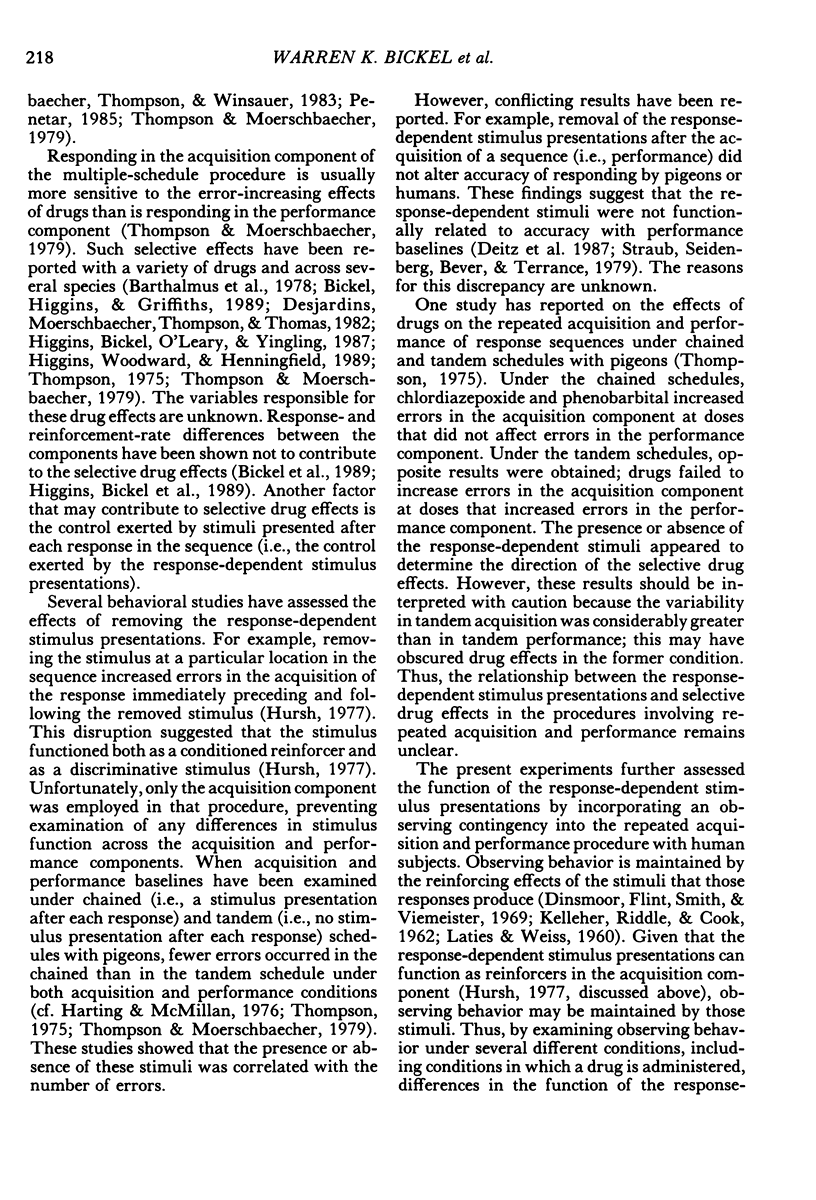

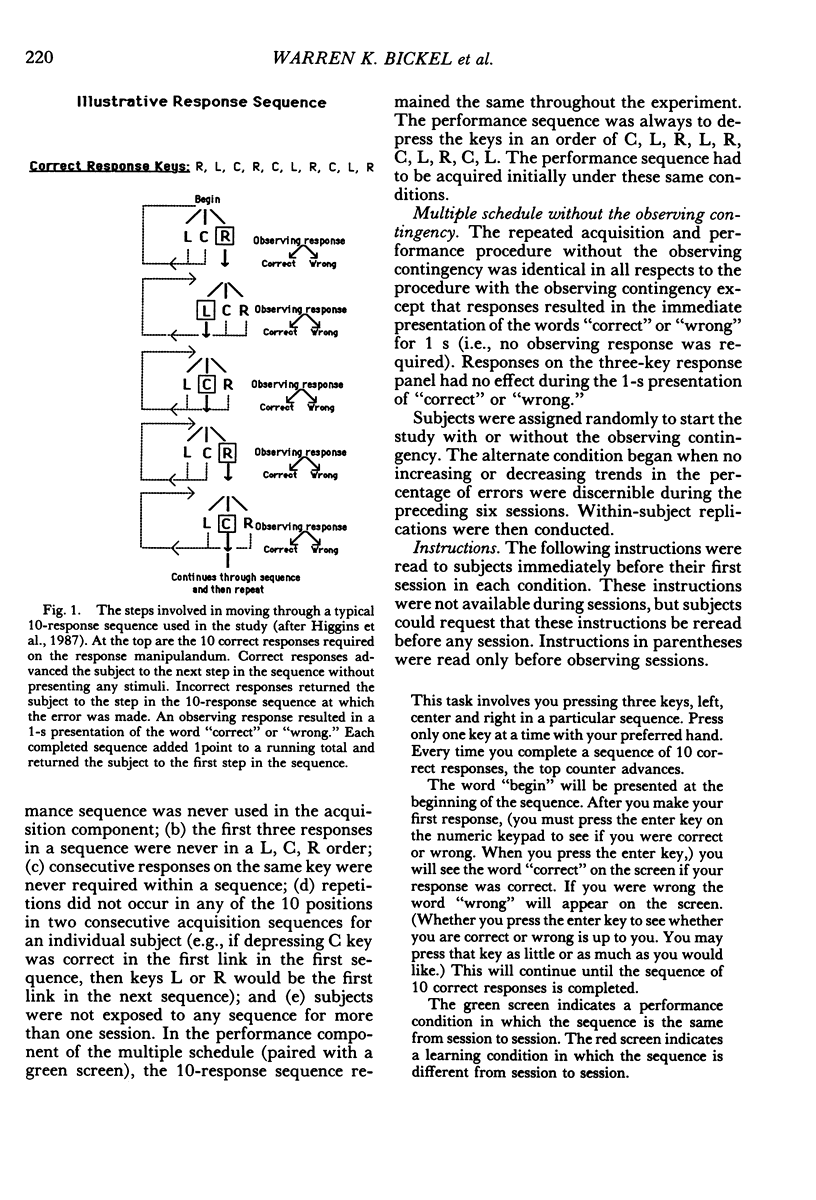
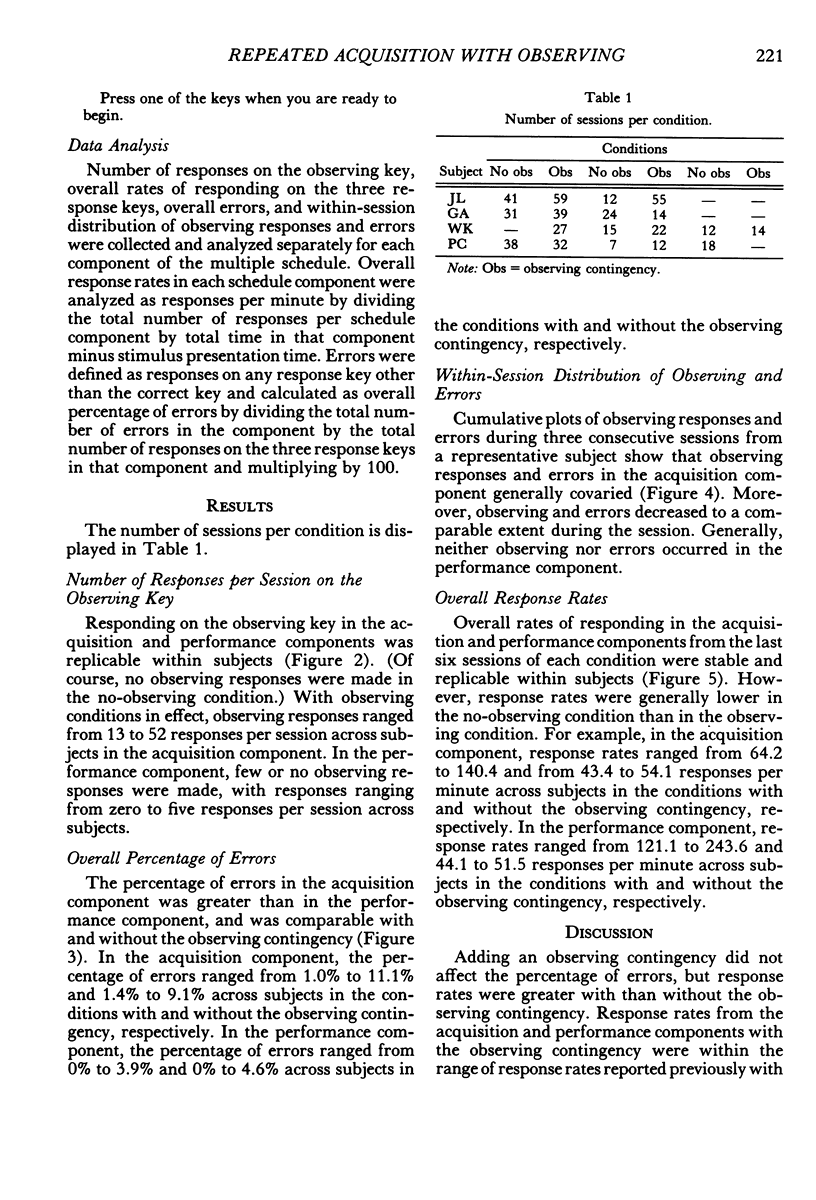

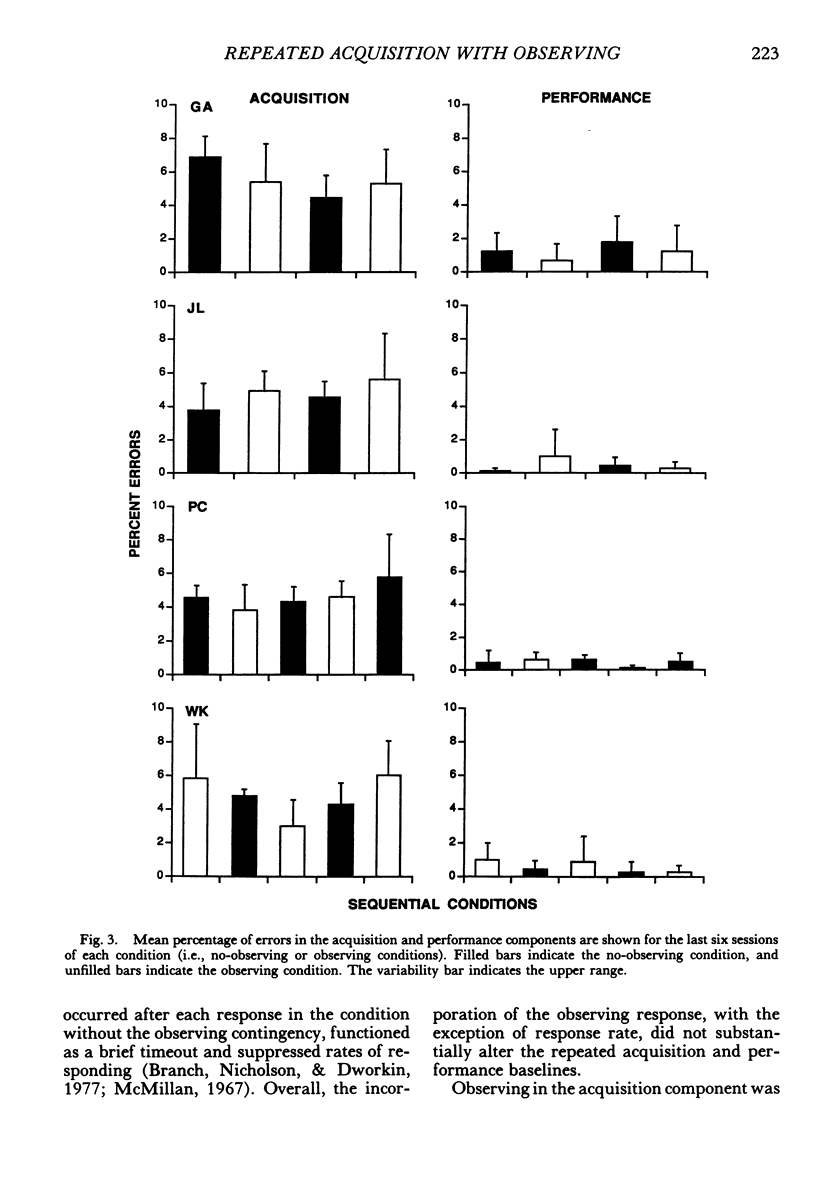

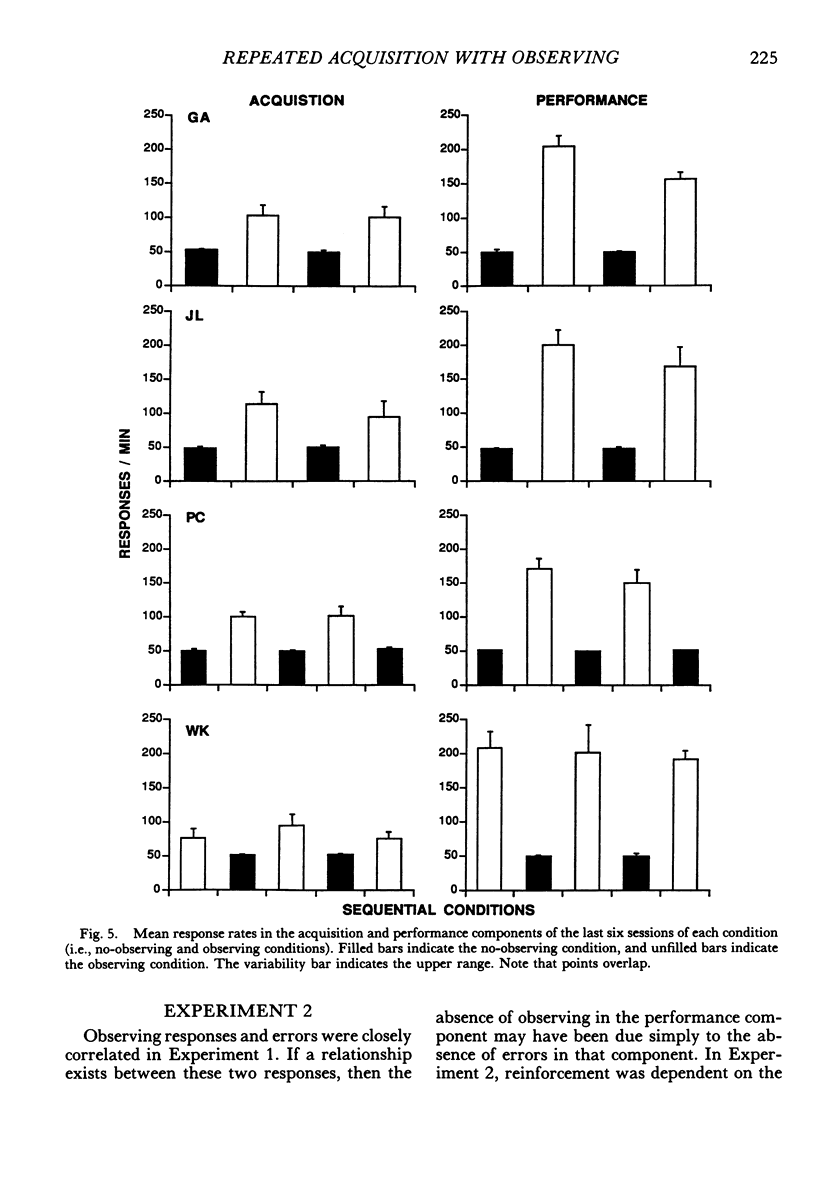

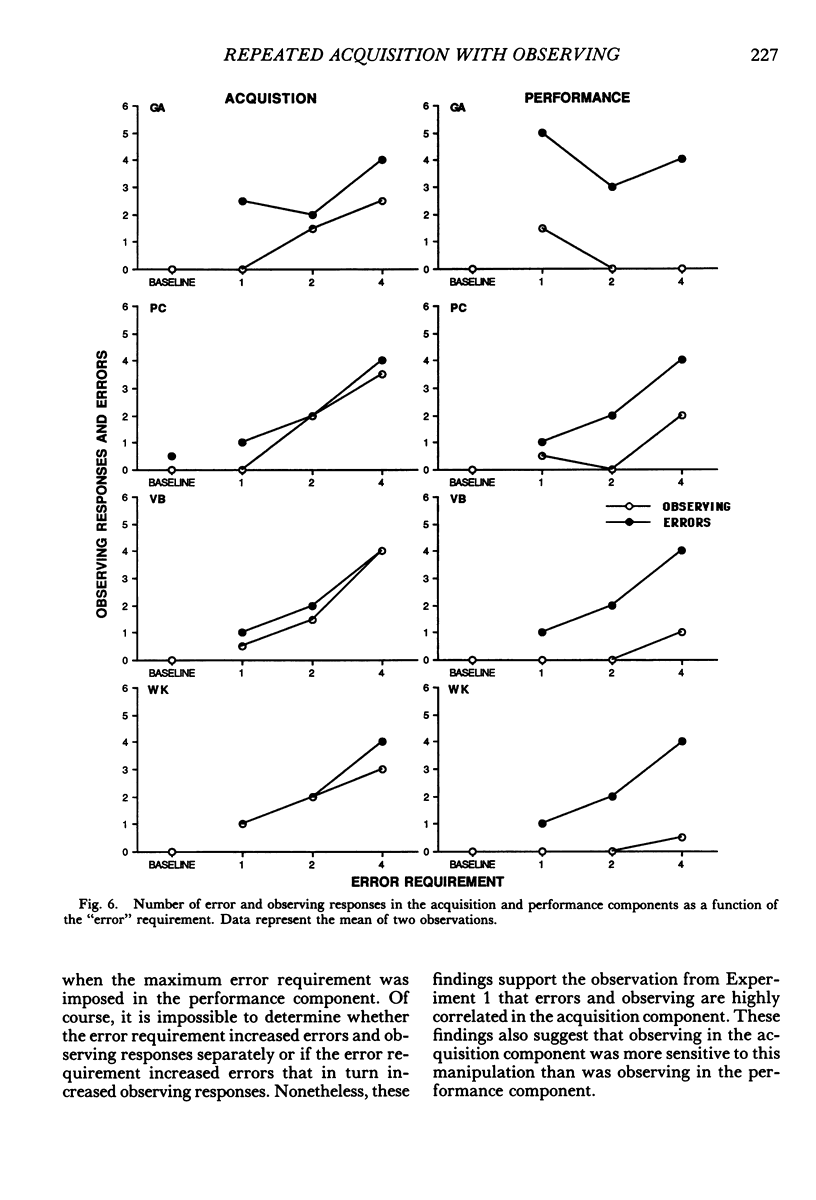





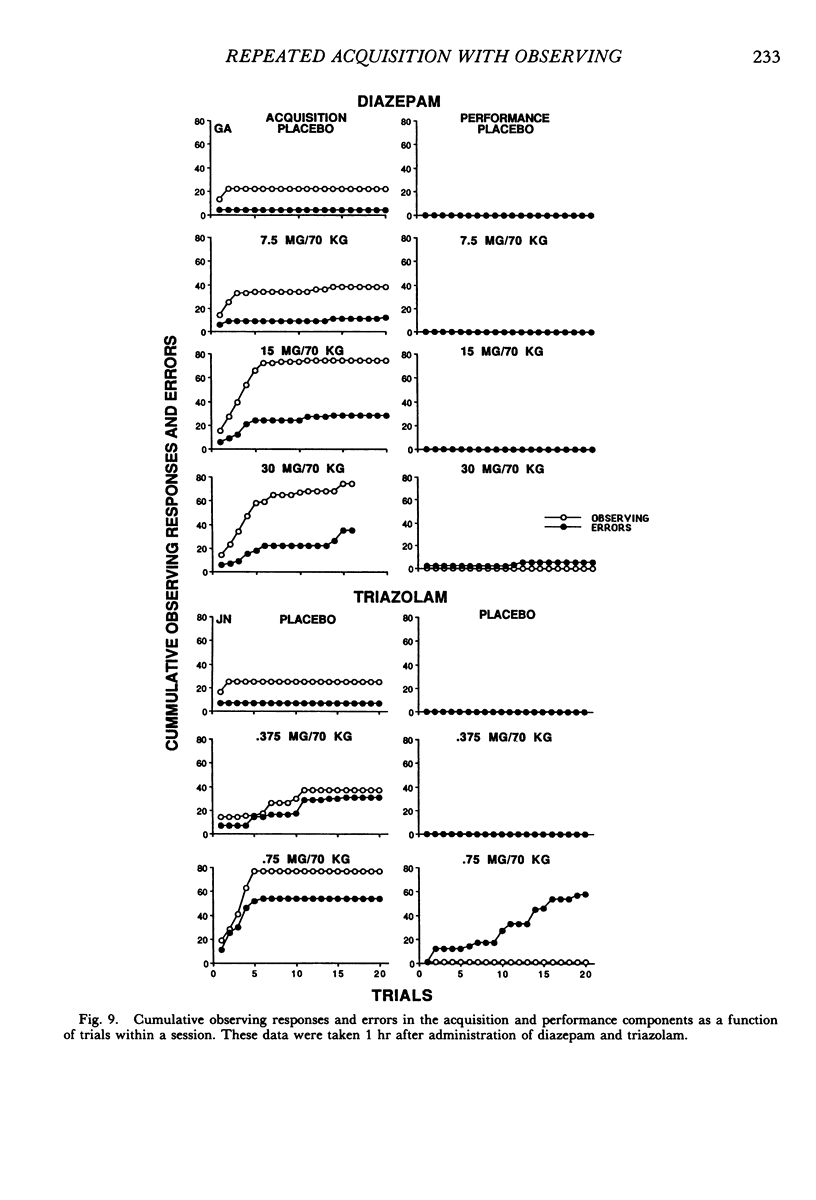
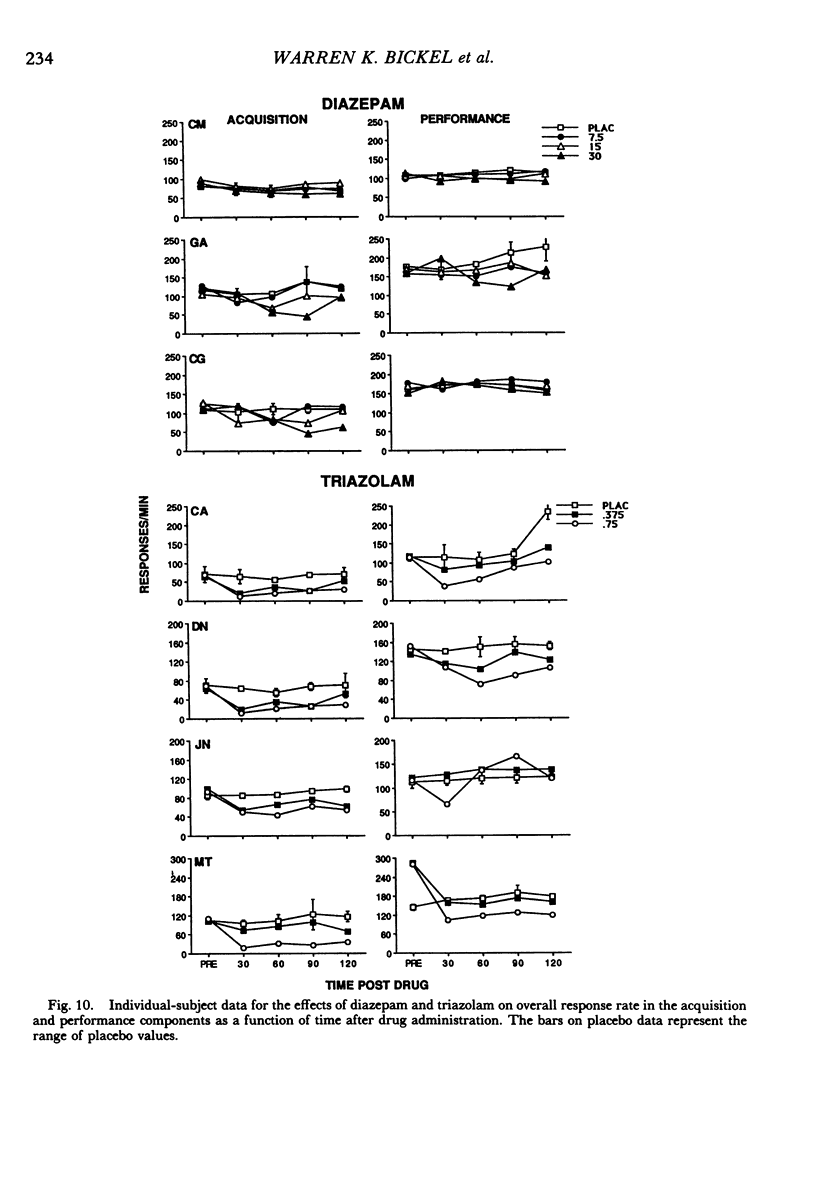

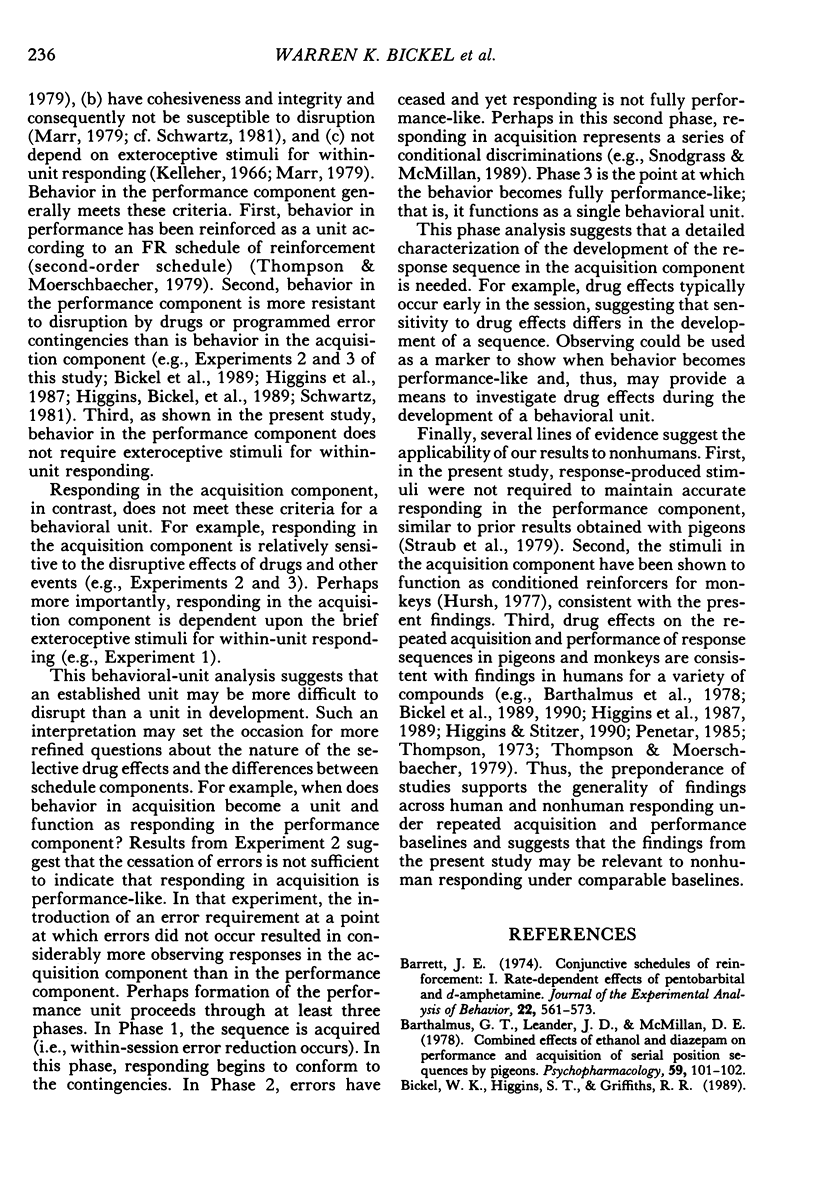
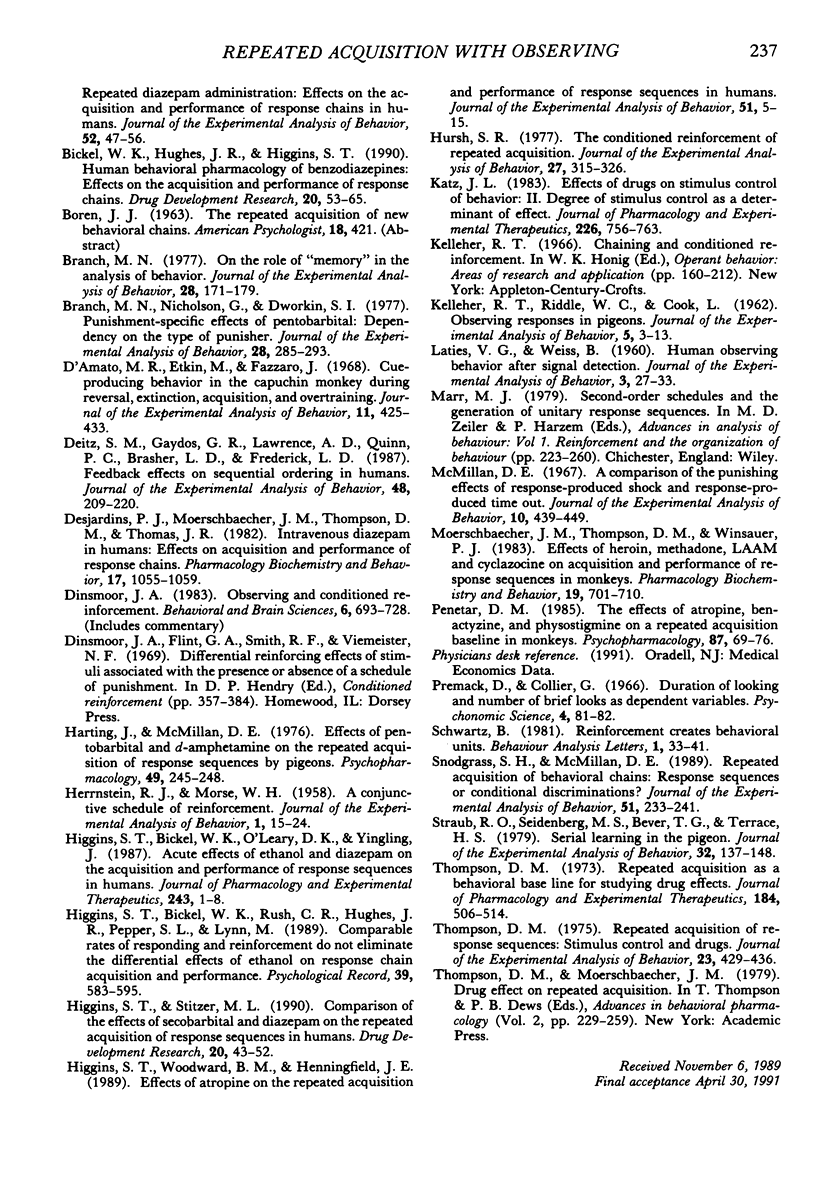
Selected References
These references are in PubMed. This may not be the complete list of references from this article.
- Barrett J. E. Conjunctive schedules of reinforcement. I. Rate-dependent effects of pentobarbital and d-amphetamine. J Exp Anal Behav. 1974 Nov;22(3):561–573. doi: 10.1901/jeab.1974.22-561. [DOI] [PMC free article] [PubMed] [Google Scholar]
- Barthalmus G. T., Leander J. D., McMillan D. E. Combined effects of ethanol and diazepam on performance and acquisition of serial position sequences by pigeons. Psychopharmacology (Berl) 1978 Sep 15;59(1):101–102. doi: 10.1007/BF00428039. [DOI] [PubMed] [Google Scholar]
- Bickel W. K., Higgins S. T., Griffiths R. R. Repeated diazepam administration: effects on the acquisition and performance of response chains in humans. J Exp Anal Behav. 1989 Jul;52(1):47–56. doi: 10.1901/jeab.1989.52-47. [DOI] [PMC free article] [PubMed] [Google Scholar]
- Branch M. N., Nicholson G., Dworkin S. I. Punishment-specific effects of pentobarbital: dependency on the type of punisher. J Exp Anal Behav. 1977 Nov;28(3):285–293. doi: 10.1901/jeab.1977.28-285. [DOI] [PMC free article] [PubMed] [Google Scholar]
- Branch M. N. On the role of "memory" in the analysis of behavior. J Exp Anal Behav. 1977 Sep;28(2):171–179. doi: 10.1901/jeab.1977.28-171. [DOI] [PMC free article] [PubMed] [Google Scholar]
- D'Amato M. R., Etkin M., Fazzaro J. Cue-producing behavior in the Capuchin monkey during reversal, extinction, acquisition, and overtraining. J Exp Anal Behav. 1968 Jul;11(4):425–433. doi: 10.1901/jeab.1968.11-425. [DOI] [PMC free article] [PubMed] [Google Scholar]
- Deitz S. M., Gaydos G. R., Lawrence A. D., Quinn P. C., Brasher L. D., Fredrick L. D. Feedback effects on sequential ordering in humans. J Exp Anal Behav. 1987 Sep;48(2):209–220. doi: 10.1901/jeab.1987.48-209. [DOI] [PMC free article] [PubMed] [Google Scholar]
- Desjardins P. J., Moerschbaecher J. M., Thompson D. M., Thomas J. R. Intravenous diazepam in humans: effects on acquisition and performance of response chains. Pharmacol Biochem Behav. 1982 Nov;17(5):1055–1059. doi: 10.1016/0091-3057(82)90493-2. [DOI] [PubMed] [Google Scholar]
- HERRNSTEIN R. J., MORSE W. H. A conjunctive schedule of reinforcement. J Exp Anal Behav. 1958 Jan;1:15–24. doi: 10.1901/jeab.1958.1-15. [DOI] [PMC free article] [PubMed] [Google Scholar]
- Harting J., Mcmillian D. E. Effects of pentobarbital and d-amphetamine on the repeated acquisition of response sequences by pigeons. Psychopharmacology (Berl) 1976 Sep 29;49(3):245–248. doi: 10.1007/BF00426823. [DOI] [PubMed] [Google Scholar]
- Higgins S. T., Woodward B. M., Henningfield J. E. Effects of atropine on the repeated acquisition and performance of response sequences in humans. J Exp Anal Behav. 1989 Jan;51(1):5–15. doi: 10.1901/jeab.1989.51-5. [DOI] [PMC free article] [PubMed] [Google Scholar]
- Hursh S. R. The conditioned reinforcement of repeated acquisition. J Exp Anal Behav. 1977 Mar;27(2):315–326. doi: 10.1901/jeab.1977.27-315. [DOI] [PMC free article] [PubMed] [Google Scholar]
- KELLEHER R. T., RIDDLE W. C., COOK L. Observing responses in pigeons. J Exp Anal Behav. 1962 Jan;5:3–13. doi: 10.1901/jeab.1962.5-3. [DOI] [PMC free article] [PubMed] [Google Scholar]
- Katz J. L. Effects of drugs on stimulus control of behavior. II. Degree of stimulus control as a determinant of effect. J Pharmacol Exp Ther. 1983 Sep;226(3):756–763. [PubMed] [Google Scholar]
- Laties V. G., Weiss B. Human Observing Behavior after Signal Detection. J Exp Anal Behav. 1960 Jan;3(1):27–33. doi: 10.1901/jeab.1960.3-27. [DOI] [PMC free article] [PubMed] [Google Scholar]
- McMillan D. E. A comparison of the punishing effects of response-produced shock and response-produced time out. J Exp Anal Behav. 1967 Sep;10(5):439–449. doi: 10.1901/jeab.1967.10-439. [DOI] [PMC free article] [PubMed] [Google Scholar]
- Moerschbaecher J. M., Thompson D. M., Winsauer P. J. Effects of heroin, methadone, LAAM and cyclazocine on acquisition and performance of response sequences in monkeys. Pharmacol Biochem Behav. 1983 Oct;19(4):701–710. doi: 10.1016/0091-3057(83)90348-9. [DOI] [PubMed] [Google Scholar]
- Penetar D. M. The effects of atropine, benactyzine, and physostigmine on a repeated acquisition baseline in monkeys. Psychopharmacology (Berl) 1985;87(1):69–76. doi: 10.1007/BF00431781. [DOI] [PubMed] [Google Scholar]
- Snodgrass S. H., McMillan D. E. Repeated acquisition of behavioral chains: response sequences or conditional discriminations? J Exp Anal Behav. 1989 Mar;51(2):233–241. doi: 10.1901/jeab.1989.51-233. [DOI] [PMC free article] [PubMed] [Google Scholar]
- Straub R. O., Seidenberg M. S., Bever T. G., Terrace H. S. Serial learning in the pigeon. J Exp Anal Behav. 1979 Sep;32(2):137–148. doi: 10.1901/jeab.1979.32-137. [DOI] [PMC free article] [PubMed] [Google Scholar]
- Thompson D. M. Repeated acquisition as a behavioral base line for studying drug effects. J Pharmacol Exp Ther. 1973 Feb;184(2):506–514. [PubMed] [Google Scholar]
- Thompson D. M. Repeated acquisition of response sequences: stimulus control and drugs. J Exp Anal Behav. 1975 May;23(3):429–436. doi: 10.1901/jeab.1975.23-429. [DOI] [PMC free article] [PubMed] [Google Scholar]


